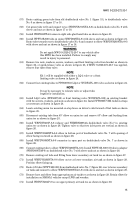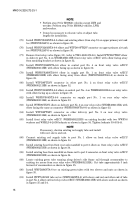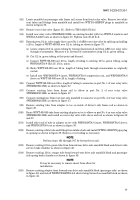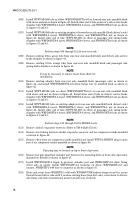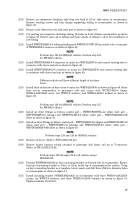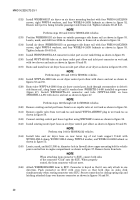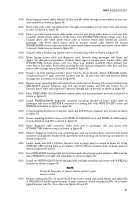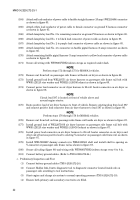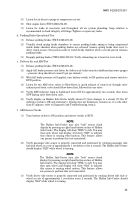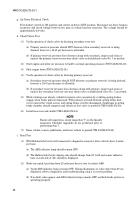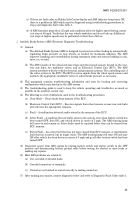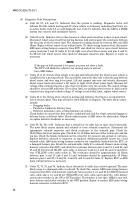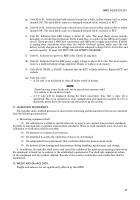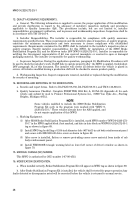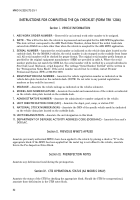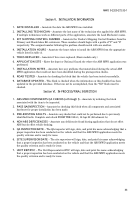MWO-9-2320-272-35-1 - Page 27 of 109
MWO 9-2320-272-35-1
25
(c) If there are fault codes on Haldex Info-Centre display and ABS indicator lamp turns ON,
there is a problem in ABS which must be diagnosed using troubleshooting procedures in
step j and diagnostic fault codes table 1.
(d) If ABS functions properly at 25 mph and conditions allow for higher speed driving, repeat
test stop at 40 mph. Verify that the rear wheels modulate and do not lock-up. Additional
test stops at higher speeds may be performed at discretion of driver.
j.
Antilock Brake System (ABS) Electronic Diagnostic Troubleshooting
(1)
General.
(a)
The Antilock Brake System (ABS) is designed to prevent rear wheel lockup by automatically
regulating brake pressure on rear wheels, as needed, for maximum adhesion. The ABS
improves handling and controllability during emergency stops and normal braking in rain,
snow, ice, or sand.
(b)
The ABS consists of two wheel-end tone rings and wheel speed sensors located on the rear-
rear axle hubs, two modulator valves, and an Electronic Control Unit (ECU). The ABS
system interfaces with the vehicles electrical and pneumatic systems. The controlling unit of
the entire system is the ECU. The ECU receives signals from the wheel speed sensors and
instructs the appropriate modulator valves to adjust brake pressure as necessary.
(2)
This paragraph contains troubleshooting information and tests for locating and correcting
malfunctions which may develop in the ABS system.
(3)
The troubleshooting guide is used to keep the vehicle operating and trouble-free as much as
possible in the quickest, easiest way.
(4)
The following is a list of definitions used in the troubleshooting procedures.
(a)
Clear Mode – Clears faults from memory of the ECU.
(b)
Electronic Control Unit (ECU) – Receives signals from wheel sensors on rear-rear axle hubs
and activates the appropriate response.
(c)
Fault – A malfunction detected and/or stored in the memory of the ECU.
(d)
Active Fault – A condition that currently exists in the system, even when battery switch has
been turned OFF, then ON, and vehicle driven in excess of 5 mph. The ABS warning lamp
will come on and remain on. Active faults must be repaired before they can be cleared from
ECU memory.
(e)
Stored Fault – An active fault that has not been cleared from ECU memory, or intermittent
fault that has occurred, but no longer exists. The ABS warning lamp will come ON and stay
ON after vehicle has been driven in excess of 5 mph and go off after battery switch has been
turned OFF.
(5)
Disconnect power from ABS system by placing battery switch and starter switch in the OFF
position and disconnecting battery ground cable before testing for shorted or open leads or
making any repairs.
(6)
Most ABS problems are related to:
(a)
Cut, corroded or abraded leads.
(b)
Corroded connectors or terminals.
(c)
Connectors not latched or seated correctly to mating connectors.
(7)
After making any repairs, connect diagnostic tester and refer to Diagnostic Fault Codes table 1.
Back to Top

